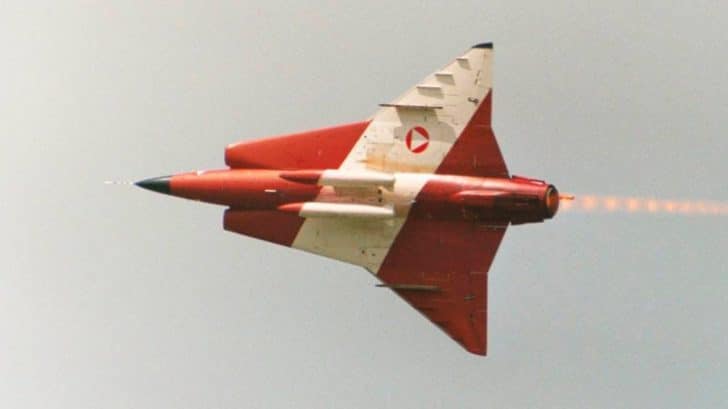During the 1960s, developing a double delta wing aircraft was seen more as an unproven technology, and seen as a rather ambitious project. Because of its unstable design, the double delta configuration encountered issues.
However, little did the Swedish know that they would discover a new maneuver- the Cobra.
Here’s how the Saab 35 became so iconic:
A Bold Idea
After WWII, the development of jet fighter technology significantly advanced. Sweden was one of those countries that foresaw the need for a supersonic fighter capable of intercepting bombers at high altitudes while engaging others.
Nordic Dragon
The Nordic Dragon flew for the first time in January 1952, in Stockholm, performing splendidly. It was the first combat aircraft that featured double delta wings.
View this post on Instagram
Its unconventional wing design also had the side effect of making it the first aircraft to be able to do the Cobra maneuver.
Cobra Maneuver
The double delta configuration not only was functional, but exceptional.
During the 60s, Swedish pilots discovered the Cobra Maneuver, a controlled “super stall” state.
This challenging display involved rapidly lifting the nose which causes the plane to fly forward, perpendicular to the ground. Then, facing the sky, the pilot would turn the airframe into an enormous airbrake to slow it down as quickly as possible. This maneuver demonstrated Saab 35’s tremendous maneuverability.
Most Satisfactory
Deliveries of Draken’s first iteration began in late 1959. According to Flight International, the introduction of the J35A to serve was not only smooth, but the scramble and turnaround ties were actually “most satisfactory.”
View this post on Instagram
Last Years
Over the years, the design saw several modifications with the last being the J35J produced during the late 1980s.
View this post on Instagram
However, the Draken had already been replaced by Saab 37 Viggen at that point and was eventually phased out by 1999. Still, the Draken left a remarkable legacy with its double delta configuration.



